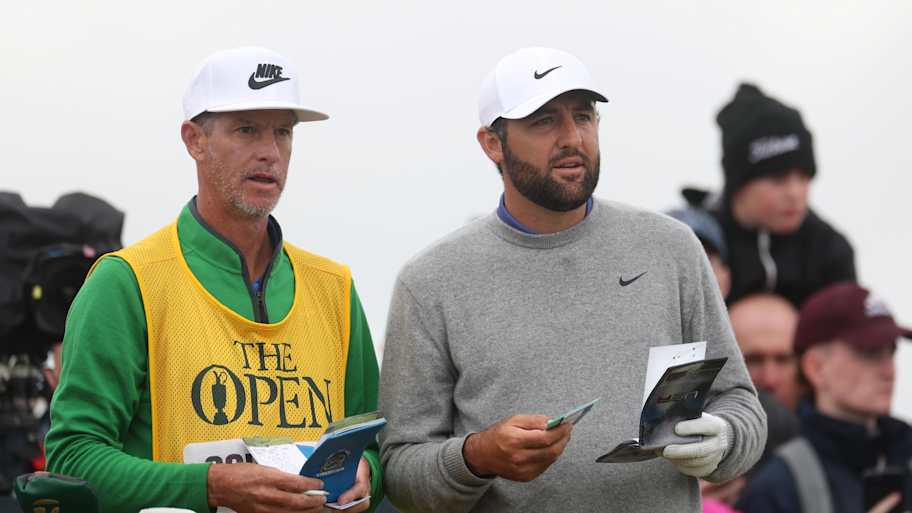A Unique Perspective on the British Open
During the second round of the British Open, the USA Network captured a unique moment that highlighted the blend of nature, sport, and human curiosity. Two individuals, whether golf fans or adventure seekers, had climbed to the top of a cliff overlooking Royal Portrush and the ocean. This vantage point offered them an unparalleled view of the tournament, where Scottie Scheffler was making a significant impact.
Scheffler’s performance was nothing short of spectacular. He sank a 34-foot birdie on hole number six, marking his second consecutive birdie in a series of three. His momentum continued with four more birdies on the back nine, creating a dramatic display that included wardrobe changes due to the unpredictable weather. The broadcast team made a deliberate choice to focus on the climbers’ reactions from their elevated perch, capturing a moment that conveyed the excitement and awe of the event without excessive commentary.
The imagery of a raised hand against a gray sky, surrounded by rugged greenery and open umbrellas below, illustrated the power of visual storytelling. Sometimes, a single image can convey more than words ever could. The broadcast partner deserves credit for its ability to set the scene effectively, avoiding overly packaged content and highbrow narration. Instead, they focused on the essence of the event, allowing viewers to experience the atmosphere without unnecessary embellishment.
This approach is refreshing in an era where many broadcasts rely on elaborate storytelling and historical references. Rather than turning the event into a travelogue or history lesson, the coverage emphasizes the connection between golf and its rich heritage. For someone like me, who may not fully grasp the significance of such a location, the simplicity of the framing adds depth. It allows viewers to imagine themselves in the moment, feeling as though they are truly there.
The British Open offers a rare opportunity to experience a place that feels otherworldly, even if only for a few days. It serves as a reminder of the beauty and history that exist beyond our everyday lives. The broadcast captures this magic, encouraging viewers to revisit their bucket lists and consider the possibility of traveling across the Atlantic to experience these iconic courses.
The effectiveness of the broadcast lies in its straightforward approach. Unlike traditional sports coverage that often relies on technology and gimmicks, this presentation respects the natural pacing of the game. It invites viewers to observe the subtleties and engage their own creativity. This method aligns perfectly with the spirit of links golf, which values simplicity and tradition over spectacle.
From their vantage point on the hill, the two climbers might have glimpsed other historic venues of the game, all nestled in a compact area untouched by time. There is a certain thrill in watching a sporting event from afar without the need to purchase a ticket. These moments, however, are becoming increasingly rare due to the commercialization of sports events.
Yet, these two individuals found a way to experience the magic. The land they stood on has existed long before the game of golf began. For centuries, anyone with the determination and courage to climb it could witness the action below, whether it was a world-class player or an amateur trying to keep up. Cameras happened to capture them at a pivotal moment when the best player in the world was making a move.
While it may seem like luck, the climbers had done the work to reach that spot. The USA Network also played a role by using imagination and vision to highlight their presence. This combination of effort and creativity resulted in a memorable moment that encapsulates the essence of the British Open.







